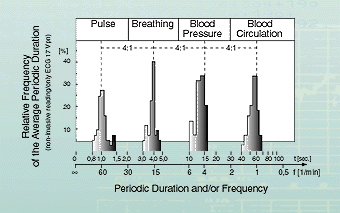Spectral analytical studies of the circulatory and respiratory rhythms during sleep at night have shown (illustration 12) that, besides the pulse-breathing-ratio, the frequency ratios to the blood pressure rhythm and minute rhythm of the peripheral blood circulation are adjusted with great precision to the whole numbered quotient value 4:1 (double octave), if during sleep at night the regenerating functions of the metabolic system predominate.

